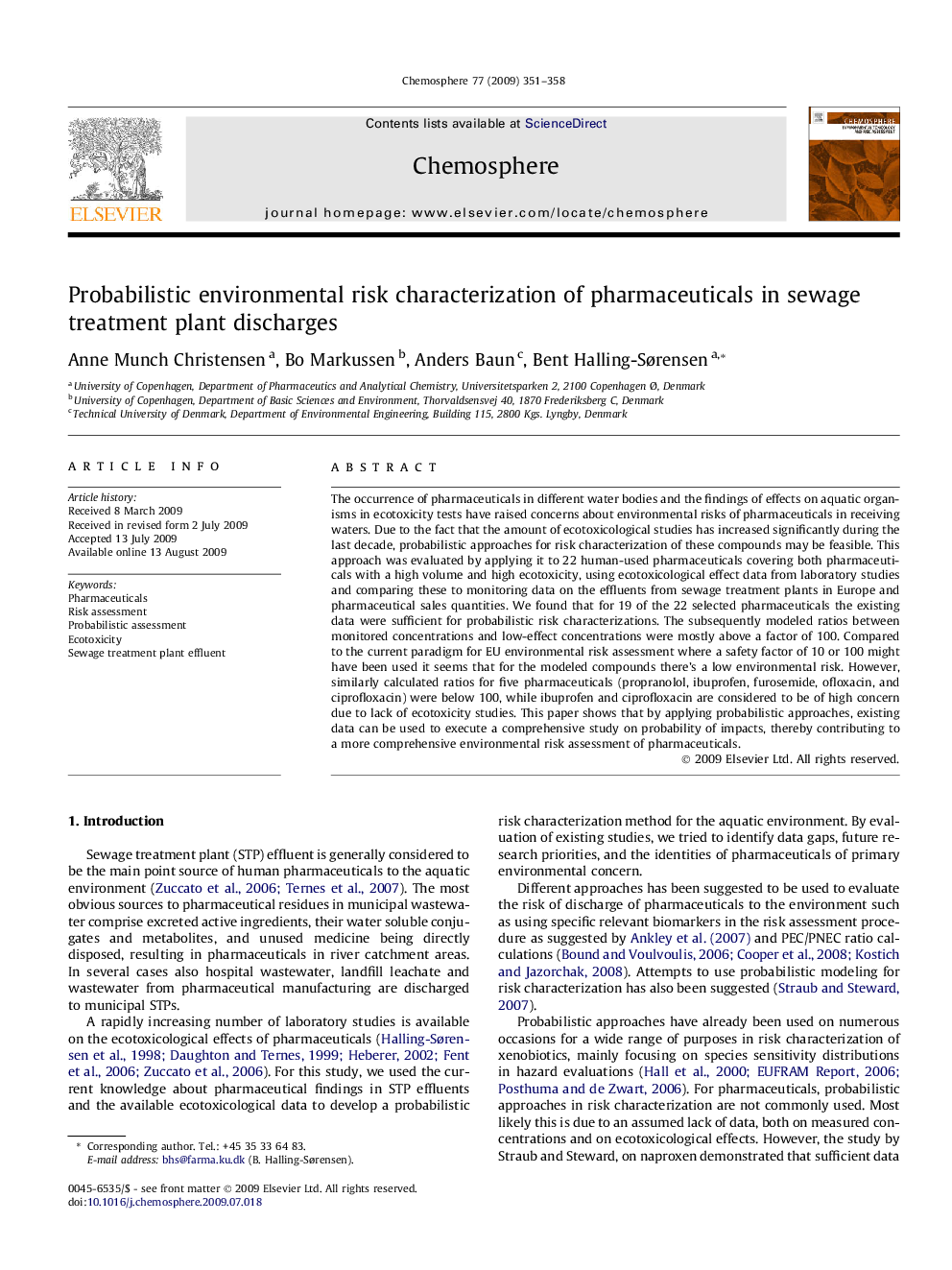| Article ID | Journal | Published Year | Pages | File Type |
|---|---|---|---|---|
| 4412383 | Chemosphere | 2009 | 8 Pages |
The occurrence of pharmaceuticals in different water bodies and the findings of effects on aquatic organisms in ecotoxicity tests have raised concerns about environmental risks of pharmaceuticals in receiving waters. Due to the fact that the amount of ecotoxicological studies has increased significantly during the last decade, probabilistic approaches for risk characterization of these compounds may be feasible. This approach was evaluated by applying it to 22 human-used pharmaceuticals covering both pharmaceuticals with a high volume and high ecotoxicity, using ecotoxicological effect data from laboratory studies and comparing these to monitoring data on the effluents from sewage treatment plants in Europe and pharmaceutical sales quantities. We found that for 19 of the 22 selected pharmaceuticals the existing data were sufficient for probabilistic risk characterizations. The subsequently modeled ratios between monitored concentrations and low-effect concentrations were mostly above a factor of 100. Compared to the current paradigm for EU environmental risk assessment where a safety factor of 10 or 100 might have been used it seems that for the modeled compounds there’s a low environmental risk. However, similarly calculated ratios for five pharmaceuticals (propranolol, ibuprofen, furosemide, ofloxacin, and ciprofloxacin) were below 100, while ibuprofen and ciprofloxacin are considered to be of high concern due to lack of ecotoxicity studies. This paper shows that by applying probabilistic approaches, existing data can be used to execute a comprehensive study on probability of impacts, thereby contributing to a more comprehensive environmental risk assessment of pharmaceuticals.
